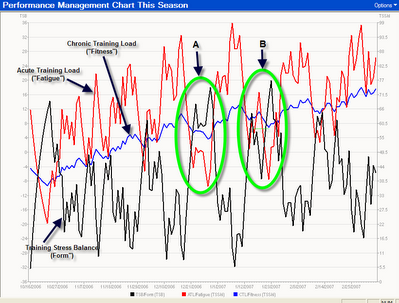Training, Testing and Junior Athletes
I was recently asked to comment on a proposed testing program for a junior triathlon team. The athletes are age 14 or younger. The testing would include blood draws for lactate analysis done at regular intervals, especially early in the season. Also included would be periodic 40k bike time trials to establish fitness levels during the season.
My response:
Wow, pretty serious stuff. In my opinion, this is well beyond the needs and best interests of 14 year olds. Even with the pros I coach I do blood draws quite infrequently--once or twice a year. Most never do any blood lactate testing. Not only do they not enjoy being pricked but if the analyzer is a portable one being operated by someone who hasn't done hundreds of them then the results are highly questionable. The only times I've done lactate analysis with my pros was when we had access to a YSI Lactate Analyzer, a highly experienced technician (not me), and a sterile environment. Otherwise, you are sticking your neck out, especially with kids. I prefer to use metabolic testing and even then this is done only 2-4 times a year.
I never have my pros do 40k TTs as tests let alone TTs that would take them over an hour (50k?). That's a very long test effort. This is a good way to find out what someone's motivation level is rather than their fitness level. If this is to establish and compare fitness levels, or to find out heart rate or power data there are far better ways to do it--most of which greatly reduce the motivation issue.
I'm a firm believer that athletes this young should be working primarily on skills and fun group workouts rather than doing things they might do some day if Olympic caliber. There is plenty of time for that later as they develop--if they hang with it. For example, I hired a coach for my son when he was 14 and told the coach I only wanted one thing--for Dirk to still be racing when he was 24. Dirk is now 37 and races nearly every weekend in the season. Along the way he raced pro in Europe (cyclist) for 5 years after H.S., won the Colorado state road championship at age 17 and was on the junior national team. He is still considered one of the strongest riders in Colorado and is on the podium frequnetly in pro-1-2 races even though he is now an amateur. His coach at age 14 did a great job. Had he burned Dirk out with frequent testing and an emphasis on attaining peak fitness at an early age I would have been beyond angry.
There is research showing that young athletes are more likely to overdo their training than an older athlete as they tend to think that they should be able to do anything the coach even suggests. They are more likely to be seriously injured, overtrained and burned out. Older athletes are wise enough to know when to call it quits. Young athletes have no basis for comparison. It can be dangerous to try to push them to greater fitness levels.
I'd highly recommend a more conservative approach.
Joe


